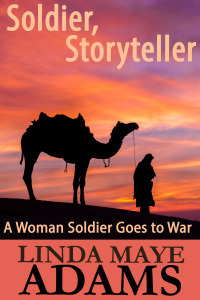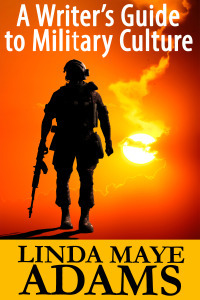Linda Maye Adams's Blog, page 78
November 4, 2016
Nano Day 3 & Pantsing 101
Writing group Thursday night, which was the time I normally write. I wasn’t planning on writing at all, but managed to grab some words in about 30 minutes at lunch. I have a Surface, so I can take that with me. Weather was really nice, so I did it outside on a picnic table. Surprise, surprise. We still have a few turtles that haven’t gone into hibernation.
Pantsing 101
One thing I’m loosely keeping track of is the timeline. I’m not talking about the timeline of the events that happen in the story, which is what everyone usually talks about. If I let the story flow out organically, the timeline will work like it’s supposed to. It’s the timeline of past events that get mentioned in the story that I’m tracking. Those are easy to forget and get wrong!
So it looks something like this:
20 years ago – Space Cruiser built
5 years ago – Space Cruiser visited Planet X
2 years ago – Space Cruiser refitted
It’s nothing fancy. No complicated spreadsheets or software to do it–that takes time away from writing and makes it harder for me to track it. My Rule 1 of writing is “Never make more work for myself!” So simple as possible is best. I created a page in the Research folder in my Scrivener for Windows project, called it timeline, and typed in the first event.
Day 3 Word count: 500
Story Total: 3100
Filed under: Writing Tagged: pantsing, story timelines








November 2, 2016
Nano Day 2 & Pantsing 101
I wasn’t sure what I would be able to get done today. I woke up a Sinus Zombie—the weather’s all over the place right now, and it’s hard on everyone’s sinuses. We were rather warm today, tomorrow will have rain, and then we’ll probably drop to the normal November weather. Leaves don’t have much color, and they’re now at their peak.
The Writing
First thing I did was set the timer for 30 minutes and run a quick spell check on Scene 1. Then a quick read through. Mostly, I fixed a few typos (always!), added a sentence. Probably not a lot of cycling here yet, not until the story evolves more. I jumped into Scene 2, wrote until the timer went off, and then did that a second time. All the while, my head kept saying that I wasn’t getting much done (it lies!), and I wound up with 1,400 words.
Pantsing 101
I’m messy when I write. Sometimes I type something out, and for whatever reason, it evolves itself out as I develop the scene. Like I might think of a line of dialogue, put it in, and then the scene evolves so fast that it leaves that line behind.
When I get these, I Ctrl X them and drop them into a file called Scene # Extras. I’ve heard of writers saving the words in case they can reuse them, but mine’s not like this. I know from experience that if it goes in the extras file, it’s never getting used. It’s something that I needed to write, but wasn’t meant to be in the story. The words still count, because I wrote them and made the effort. Tomorrow, I’ll move them into my Extras folder and start a new file for the next scene.
Day 2 Word count: 1400
Story Total: 2600
Filed under: Writing Tagged: Nanowrimo, Pantsing 101








November 1, 2016
Nanowrimo Day 1 & Pantsing 101
I decided to do Nano this year, for the first time, though informally. I’m not registering on any of the sites or participating in the social parts of it. Rather, I’m just using it as a goal to write a completed book in 30 days.
The tool I’m using to write is Scrivener for Windows. The story has a working title of “Collision,” and is science fiction. I’m not setting a daily word count goal, and I’m sure I will have days I don’t write (usually Friday). The last time I tried a novel in 30 days, I was focused solely on getting that word count. I didn’t get all the way to the end, because I was trying to write straight through (without cycling). The story warped out of alignment, way out of alignment, and there was a point where I was typing to make word count, but not producing good story.
This is about producing a good story.
Pantsing 101
I came up with this idea while working on the novella I just finished on October 31 (my subconscious clearly knew the story was almost done though my head kept thinking there must be another 10K).
The idea started with an exciting action scene (since the working title is Collision, you can guess what that action scene is). I spent the last two weeks playing around with it in my head. Outliners would say that I was outlining in my head, but it’s nothing like that. It was more like being in a bank and imagining what would happen if it was held up while I was there.
My first instinct was to plop this scene right in the beginning of the story. But I think that was my critical brain trying to jump right in and muck things up. It always wants to rush through everything, sort of like a child who races downstairs before everyone is up to open all the Christmas presents. So I think it’ll be a later in the story.
That’s a change from the last story. An action scene popped in there, too, in the first third, and I ended up taking it out because it was too soon. Elements of it ended up in the last third. Sometimes ideas don’t come in the proper order, and sometimes that order isn’t always obvious.
October 31, 2016
Books on Sale for November
November is Veteran’s Day, so I’m offering my Desert Storm memoir at a sale price of .99.

On August 2, 1990, Saddam Hussein invaded Kuwait. Within twenty-four hours, he controlled the entire country. Five days later, the United States was deploying soldiers and had named the military operation Desert Shield. This would be the largest deployment of women at the time. Soldier, Storyteller is a rare inside look at war from a woman’s perspective and answers “What was it like?”
Available from your favorite bookseller, including Amazon.
November is also Nano Write, so both my craft books are on sale for .99.

Former soldier and Desert Storm veteran Linda Maye Adams walks step-by-step to help the civilian fiction writer understand how military culture works. From enlistment to war, this book takes you on a tour of what it’s like to be a soldier. Do soldiers curse non-stop? Do they always yell, “Yes, Drill Sergeant!” after every sentence? What is the difference between an officer and an enlisted soldier? If you don’t know anything about the military, this book will tell you where you can research information without having to go through basic training yourself.
Available from your favorite booksellers including Amazon.

For writers who don’t outline—called pantsers—it’s hard finding anything on how to write that doesn’t involve outlining.
Author Linda Maye Adams, a pantser writer, cuts through some of the myths and may save you wasted time looking for solutions.
In this guide, Linda Maye Adams addresses the issues that derail pantsers and also provides tips to make the writing process easier.
Available from your favorite bookseller, including Amazon.
Filed under: Military, Writing Tagged: Desert Storm, Military, Pantser, pantsing, writing craft








October 28, 2016
Pantsing 101: 3 Things to Avoid
We had three secrets that would be helpful for the pantser writing a book without an outline, so we have to have 3 things to avoid.
Avoid asking for permission
This is common on writing message boards. Writer comes on, posts a question, and it’s along the lines of “Am I allowed to do this?”
Unfortunately, this is usually asked from writers at the same skill level, and they often don’t know any more than the person asking the question. If the question is about pantsing, invariably, you’re going to get “You have to outline.” On one of the Facebook pages I’m on, one of the writers was shocked that you didn’t have to outline. She’d heard everywhere that it was “required.”
Avoid “fake experts”
There’s a shocking number of fake experts out there. These are people who either no credentials or little credentials but claim expertise on how to write books. Because of NANO, I keep seeing ads for this business, trying to sell me on how to write. Extensive site, but generic writing advice. The About page didn’t tell me if the owner had any writing experience, which means he doesn’t. A writer with experience isn’t going to hide that.
The problem with the fake experts and pantsers is that outlining is easy to teach. They can pound their fists and declare “All pantsers books are a mess!” or “Pantsers need structure!” and make you feel like the way you write isn’t the correct way—and they have no idea what they’re talking about!
Yet, they can sound very credible, so you must learn to watch for them. One of the most telling ways to discover fake experts is from Forbes:
Real experts have no trouble saying: “I don’t know.”
An example of this happened several years ago. A writer posted on Dean Wesley Smith’s blog that he/she was struggling with writing a memoir. Being a fiction writer, Dean admitted he didn’t know.
 (For the record, I did provide my experience writing Soldier, Storyteller. The writer’s experience sounded similar to mine.)
(For the record, I did provide my experience writing Soldier, Storyteller. The writer’s experience sounded similar to mine.)
Don’t switch to outlining because you run into trouble on the story
Every time I read a writer saying, “I’m a reformed pantser,” I cringe. I wonder if that writer tried the outlining and then gave up writing entirely in frustration, figuring they couldn’t write.
If the story is a mess, or you painted yourself into a corner—assuming it isn’t your head talking and saying the story is garbage—stop.
Start reading back to where the story felt right. Pantsers tend to go down rabbit holes. Sometimes those yield great rewards, and sometimes it isn’t the right direction. It might be that you just need to take out some scenes to get back on track.
By the way, this is also another reason why “writing straight through to the end” isn’t a good idea for pantsers. You have to be able to back out of the rabbit hole and steer away from it. Can’t do that if you go straight through.
But also, if you stop and work out the problem, you’ll learn a lot about how you write and about things that you need to do so your process works.
Filed under: Writing Tagged: Outlining, pantsing, Pantsing 101








October 27, 2016
Pantsing 101: 3 Secrets that make pantsing easier
No one talks about it, but there are a lot of secrets that make pantsing a novel easier. In fact, some of the secrets are dismissed by outliners (go figure)
Turn off spell check
That wavy red line identifying when you’ve spelled a word wrong or one it doesn’t recognize is quite disruptive. In a business writing class, the instructor said it was like a bell going off, telling you to do something. It triggers the need to stop and fix the spelling error—and interrupts the creative flow. Turn it and the grammar checker off, and then run it after you’re done writing your scenes. Or run it when you’re don’t feel much like writing. We’ve had up and down weather changes and my sinuses have not been happy. Good time to run spell check.
Don’t make more work for yourself.
Get the grammar and the punctuation reasonably right and fix the typos when you run the spell check.
Being sloppy means that you are making more work for yourself.
But especially, never ever utter the words, “I’ll leave that to the revision.” Because a pantser’s story evolves out of what’s already been done in the story, that decision can affect everything after that point. I said “I’ll leave that to the revision” on a thriller I was working on. That single decision caused multiple things that needed to be fixed to bring everything in line. Once I did that, those changes created more things that needed to fixed, and those in turn required more things to be fixed.
If you’re stuck, stop and figure out why and what you need to do while you’re still in the first draft, while you’re still creating. Much easier taking care of it in creative mode than trying to fix a completed story.
Move around in the story
A lot of writers approach the first draft as something distasteful that needs to be knocked out of the way in the most expedient process (also how “I’ll leave it to the revision” ends up creating problems). The result is a piece of advice that is not good for pantsers: Write straight through to the end and don’t touch anything.
But as a pantser, the story is evolving as you discover new things about it. You may have to go back to Chapter 2 and add a sentence or a paragraph for something later in the story. All of that builds up subconsciously in your head, so that missing something might knock the story out of alignment.
This is NOT revision. Don’t tweak sentences to make them sound better. Resist the urge!
Instead, fix story related issues that result from the way you’re pantsing and the way the story evolved. There might be a character you introduced and thought he was going to be more important and then he never showed up again. Or maybe you said here that this event happened 25 years ago, and later, it’s 20 years ago. Get those things settled so they can be settled in your head by the time you wrap up the story. It does make a big difference!
I generally do a lot of moving around early on, but mostly catching typos and adding more setting and five senses, since I tend to write thin. But as I get near the end—I’m at about 8K from the end on The Crying Planet—I have to move through the entire novel. It’s looking for continuity errors, things that I put in that sounded like a good idea at the time but didn’t pan out, characterization changes, and anything that’s unclear or inconsistent. I don’t change any of the sentences unless it’s unclear, and I do run into some where I’m scratching my head and wondered what I meant to say.
An outliner might say this is a waste of time, but it isn’t. Taking a little time here can help you also reconnect with parts of the story that you forgot about. I’ve been having trouble figuring out how to end the story, and moving back to review everything reminded me that I had three scenes early in the book that I had to connect to the ending. All of it helps your creativity as a pantser.
There’s a lot of advice out there that says “don’t do.” Trust your instincts as to what works for you. It’s not wrong just because someone else says it is.
Filed under: Writing Tagged: Outlining, pantsing, Pantsing 101, writing tips








October 24, 2016
When History Makes You Feel Old
I went to the Smithsonian Museum of American History today. They had an exhibit for one of the Tucker cars, which is a car that failed due to fraud and business mismanagement. Car is stunning though. That is the actual color.
There was also an exhibit called American Stories. Dorothy’s red shoes from The Wizard of Oz was in the exhibit. They made news because the Smithsonian did a Kickstarter to raise money to restore them. The exhibit also had Archie and Edith Bunker’s chairs and Ernie from Sesame Street.
It also had one of the first computers that came out.
I remember getting one of those. My father was a computer engineer and he was trying to come up with fusion, so he bought a Heathkit H-89 about 1980. In those days, you could go to the Heathkit store and buy a product like a computer or a stereo or a clock and build it yourself.
The computer was all one piece–screen, keyboard, and floppy disk drives. It was so new at the time that he didn’t have the hard drives we’re used to now. Instead, we booted up the computer with the floppy disk. The ones that immediately followed it were pretty primitive by today’s standards. I had a Commodore-64, which I used to write screenplays. Absolutely no redundancies or error protection. I was writing along, tried to save the file, and computer informed me there wasn’t enough room on the disk and aborted.
It’s a long way from the ones of today.
But seeing computers like what you owned in a museum … oh yeah, I feel old!
Filed under: Culture, technology, Television Tagged: Commodore 64, Dorothy's red shoes, Heathkit H89, Smithsonian








October 17, 2016
Scientist’s Widow
Ana Santiago has one of those murder cases that she can’t let go. A neuroscientist with promising research.
Did his wife do it? Why does she tow around a cooler every day? Is his remains in the cooler?
Ana wants answers, but learning the truth may be more than she wants.
Available on Amazon for .99
Filed under: Books Tagged: crime, murder, Mystery, Near future, science fiction








October 14, 2016
Pantsing 101: Story as a Direction
Not understanding story is one of the biggest reasons that a pantsed book can look terrible to a developmental editor or other writers or a publisher. You throw everything in but the kitchen sink, including a 20-page scene that sounded cool, but fizzles out at some point.
Not having a story is like being out in the middle of the desert (having had way too much experience with the desert part!). It’s flat. There’s miles and miles of miles and miles. Maybe there’s a cactus here and there, or an oil barrel someone’s dumped. You wander over, have a look, but there’s nothing guiding you generally.
Story is like being a road. On either side, you have curbs, or at least the edge of the asphalt and those bumpy things to tell you if you stray off the road. You can still turn down that coolly named Aqua Ter (sounds like an underwater station) to see what’s there or check out what the heck the Stonewall Jackson Memorial is (not much, by the way).
You always have a direction, even if you aren’t sure where it’s going or ends up yet.
When you don’t have that direction, the story can turn into a mess and make you all that outlining advice be a siren’s call from across the sea.
But story is also a difficult concept to understand, and worse, it’s easy think you know what it is and have no idea once you make first contact. I read just about every craft book out there and thought I understood story. I did two novels, but during critiques of the second book, and other writers’ books, I realized how little I knew.
I’d like to say there was a craft book that could be read with a definition that gives you the lightbulb. But it’s a surprisingly complex aspect of writing. I think it’s something you have to come to your own understanding about.
So try taking a book that has been published, preferably a best seller, and read it cover to cover. Enjoy it. Don’t nitpick the sentences for flaws. If you want a book recommendation, try Michael Connelly’s The Lincoln Lawyer. He’s a pantser, and he talks about the writing of the book at the end, so you get an extra surprise there.
Then go back to the first chapter and reread it.
After that, go to an online critique group and read the first chapters of those writers and mentally compare it to what you read in Michael Connelly’s book. It’s not about having the inciting incident (a term that comes out of outlining) or a plot point (another term out of outlining).
It’s that you are going somewhere, even though you don’t know where.
**
Bonus tip: Type the first thousand words of Michael Connelly’s book. This is amazing way to learn something new about craft.
Filed under: Writing Tagged: Outlining, pantsing, Pantsing 101, story, writing fiction








October 10, 2016
Pantsing 101: What the heck is pantsing a book?
NanoWrite is coming up in just another month, and with it will be the debate: Outliner or Pantser?
I’m not sure why there’s a debate. You write whatever way works best for you. Period. It shouldn’t matter.
Yet, if I search the internet for pantser, I get a lot of outliners scratching their heads and trying to define it, then concluding it really doesn’t work.
And they never tried it.
So what the heck is pantsing?
The name comes from “writing by the seat of the pants.” It’s not a very good name for what we do, and others have tried to come up with better ones: Gardener, organic (does that mean outliners are inorganic?), non-outline people.
But it boils down to a writer who does not use an outline to figure out their story. Instead, they write it like the way a reader reads a book—they discover it and the characters as they type the words. One writer I ran across said:
He picked up a pen and started writing because that was natural to him.
Everyone’s different when it comes to writing like this:
They might know what the ending is.
They might have no idea who it will end (the case with my current book).
They might know what happens in the next scene.
They might have no clue what happens in the next scene.
They might write the scenes out of order.
They might need to write them in order.
But if you read most writing books, and probably hit the writing message boards, it’s clear that the general opinion is that writing without an outline is a Really Bad Idea.
Why does pantsing get such a bad rap?
Outlining is easy to teach, like in Evan Marshall’s The Marshall Plan to Novel Writing. In the book, he gives step-by-step instructions on how to write a book by building an outline first (I tried this. My book failed by the time I hit chapter 3 and my creative side gave up on me).
It is also hard for people who are used to outlining to comprehend how someone could write an entire book without having everything laid out in a roadmap. People have told me that my first draft is the outline, or even that I must be lying about outlining, because they cannot comprehend that I start a story one word at a time.
But the biggest reason is a craft issue. If the writer is doing a first book and doesn’t understand the concept of story—a distinct possibility—pantsing makes it look ten times worse. Writer submits it to a developmental editor. Editor sees the horrible mess resulting from the combination of a craft issue and pantsing and declares that pantsing is the problem. So the writer thinks their way of writing is wrong and that they should outline.
There’s a lot of misinformation about pantsing out there. It’s important to trust yourself and not listen to what everyone is saying you “should” do. Outline or not, it doesn’t matter. The only thing that counts is the finished story.
Filed under: Writing Tagged: Outlining, pantsing, Pantsing 101, writing fiction, Writing Novels












